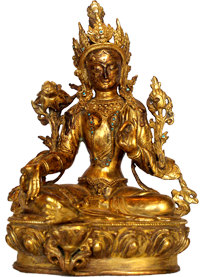Home
[smartslider3 slider=12]
Buddha Weekly's Latest Videos
[youtube-feed]
Buddha Weekly's Latest Features
September Dharma Dates 2022 — Meritorious Practice Days and Events
SEPTEMBER 2022 Buddha Weekly Monthly Dharma Dates As part of our mission to Spread the Dharma, we've tried to publicize important Dharma practice dates across all the traditions - Theravada, Mahayana and Vajrayana over the last ten years. We've diligently attempted to convert all lunar dates to western calendar dates for ease-of-use....
Limitless Buddhist Multiverse — Limitless You: Flower Garland Sutra and ultimate Buddhism: is-ness, thus-ness, all-ness
The multiverse is far larger than Buddhism, Hinduism, Quantuum realities — and Marvel Comic books. Tathata, literally, is bigger than all of these. The multiverse is, literally, as stated in the Suttas — "limitless." "There are innumerable universes besides this one, and although they are unlimitedly large, they move about like atoms...
Overcoming the Poison of Jealousy with Mudita, “Sympathetic Joy”! How can joyful Tara, and other methods, help us overcome the dangerous klesha of Envy?
Jealousy or Envy (irshya in Sanskrit) is among the most dangerous of the "poisons" of Buddhism. Why is Jealousy so dangerous? Why is overcoming jealousy a critical, urgent mission for Buddhists seeking realizations? It comes down to one core concept. To have love and compassion and sympathetic joy for all beings —...
Destroyer of Death Yamantaka: Buffalo-headed Vajrabhairava, supremely wrathful Yidam manifestation of Manjushri, the Buddha of Wisdom
Death itself is conquered by this towering, wrathful deity, Yamantaka. Conquering death, and the cycle of samsaric suffering, is at the very heart of Buddhism. As the "death destroyer" Yamantaka symbolizes this aspiration, and his meditational deity practice is designed to achieve that goal. No deity is more misunderstood than the buffalo-headed...
This Week’s Featured Video: 21 Praises to Tara in English with Tara’s mantra — for the benefit of all beings!
Tibetan Buddhists often start and end their days with the 21 Praises to Tara — the Mother of All the Buddhas. Tara, who represents the activity of all the Buddhas is the fastest, surest way to bring blessings into our lives. Singing the praise to the 21 aspects of Tara helps us...
PODCAST: Vajrakilaya’s Mantra beautifully chanted 108 times in Sanskrit — cutting the three poisons, overcoming your obstacles
Vajrakilaya and his mantra are important in our modern world — since Vajrakilaya is the activity of all the Buddhas. He is the wrathful Heruka emanation of glorious Buddha Vajrasattva. At the same time, he is the ultimate expression of Bodhichitta and compassion and love. Listen or chant along with the...
Video: Vajrakilaya Buddha documentary: cutting the 3 poisons with the sharpest weapon, plus chanted mantras
Why is wrathful Buddha Vajrakilaya, described by Garchen Rinpoche as "the mind of great love?" Can such a ferocious embodiment of Enlightenment really calm the mind and tame our obstacles, both external and internal? Why is Vajrakilaya — also called Vajrakumara — considered the activity of all the Buddhas? Come along with...
Dana, power of giving — a beggar offers the clothes off her own back to the Buddha and becomes a goddess
One of the most moving stories of generosity is found within the cycle of sutta stories featuring "The Great Benefactor" Anathapindika. Anathapindika, who was very wealthy, remains one of the most recognizable from Buddhist stories. He famously donated Jetavana park, where Buddha and his followers spent the rainy seasons in practice. While...
Power of dana and generosity “within our means” — the Sutta stories of Anathapindika, who gave Buddha Jetavana park
Anathapindika is famous for his supreme generosity. He is the benefactor immortalized through his gift of Jetavana park — used in rainy seasons throughout the centuries by Buddhist monks for retreat. This great feat of generosity cost him "enough gold to cover the entire park" — a staggering fortune. Although he gave...
Supporting Member Video: Ad-Free version HD of Manjushri Mantra beautifully chanted with visualization images.
Manjushri Mantra 108 Times beautifully chanted by Hrishikesh Sonar with Visualization images. This is the ad-free version HD, as a thank you to our wonderful supporting members:
Podcast: Manjushri Mantra in Sanskrit 108 times beautifully chanted
NEW PODCAST In Buddhism, Manjushri's ultimate wisdom mantra is famous for its cognitive and meditative benefits. His mantra is the highest expression of ultimate wisdom, or prajna. Listen or chant along with the Sanskrit version of his mantra — famous for cultivating wisdom, chanted beautifully by Hrishikesh Sonar with beautiful meditative images....
VIDEO: Manjushri’s mantra — ultimate wisdom 108 times chanted beautifully in Sanskrit with images
In Buddhism, Manjushri's ultimate wisdom mantra is famous for its cognitive and meditative benefits. His mantra is the highest expression of ultimate wisdom, or prajna. Listen or chant along with the Sanskrit version of his mantra — famous for cultivating wisdom, chanted beautifully by Hrishikesh Sonar with beautiful meditative images. On the...
Buddha Weekly’s Special Section
Tara, Mother of all Buddhas


Karma Mother
How does Tara Help?
Tara, like any Mother, is ready to jump to our aid, even in mundane areas of life. She is the “practical Buddha” — the “Karma Mother” — the Buddha most active in our lives. Her Sanskrit name translates as “a star by which to navigate” — and like a star, she is always with us whenever we look for her.

Tara on YouTube
21 Taras Mantra Video Playlist
An entire playlist of every one of the mantras for the 21 Taras. Don't miss the amazing Tara mantra chanting of Yoko Dharma for the each Tara of the 21 Taras according to Surya Gupta lineage. One video with many repetitions and visualized images for each Tara. The final video is the English-translated 21 Praises to Tara sung in English.















